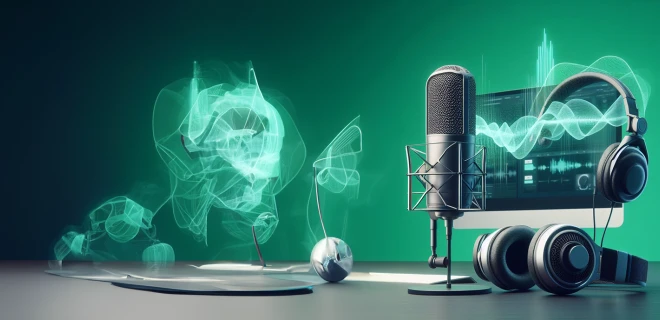When it comes to audio production, achieving a high-quality sound recording is the bedrock of creating impactful and immersive content. Whether you're a musician, podcaster, or content creator, the sound quality sets the stage for the overall success of your project.
Choosing the Right Equipment
Investing in the right equipment is the first step towards achieving a top-notch sound recording. Begin by selecting a quality microphone that suits your needs. Pair it with a reliable audio interface and pay attention to the nuances of headphones and monitors. Each component contributes to the overall clarity and richness of your recordings.
Setting Up Your Recording Space
Your recording environment plays a pivotal role in the quality of your sound recordings. Consider acoustic treatments to minimize echoes and background noise. Create a dedicated space that minimizes external disturbances, allowing you to focus on capturing pristine audio.
Understanding Microphone Techniques
Proper microphone techniques are essential for capturing the nuances of different instruments and vocals. Experiment with microphone positioning and handling to find the sweet spot for each recording scenario. Understanding these techniques enhances the depth and authenticity of your recordings.
Importance of Audio Editing
While a good recording is crucial, the magic often happens in the editing room. Learn basic editing techniques to remove noise, unwanted elements, and to enhance the overall quality of your audio. A polished post-production process can elevate your recordings to a professional standard.
Recording Techniques for Different Scenarios
Whether you're recording in a studio, on-location, or at a live event, each scenario demands different approaches. Tailor your techniques to suit the environment and optimize your recording settings accordingly.
Utilizing Recording Software
Choose recording software that aligns with your needs. Explore its features and settings to maximize its potential. Efficiently using recording software enhances your workflow and ensures a seamless recording experience.
Tips for a Quality Recording Session
Creating a conducive recording environment goes beyond technical aspects. Set the right mood for your sessions, collaborate effectively with artists, and be prepared to troubleshoot technical challenges that may arise during recording.
Post-Recording Steps
Your responsibilities don't end once the recording is done. Emphasize the importance of backups, and delve into mixing and mastering to bring out the best in your recordings. The final touches are as crucial as the initial capture.
Common Mistakes to Avoid
Be mindful of common pitfalls in sound recording, such as neglecting room acoustics, improper microphone maintenance, and rushing the recording process. Addressing these issues proactively enhances the overall quality of your recordings.
Advancements in Sound Recording Technology
Stay abreast of technological advancements in audio production. From emerging technologies to the influence of AI on sound recording, understanding these trends positions you at the forefront of the industry.
Importance of Continuous Learning
Commit to ongoing learning. Stay updated with industry trends, join communities, and invest in your education. The world of sound recording is dynamic, and continuous learning ensures you remain at the cutting edge.
Conclusion
In conclusion, achieving high-quality sound recordings is a multifaceted endeavor that involves technical expertise, the right equipment, and a commitment to continuous improvement. By following these steps and staying dedicated to the craft, you pave the way for impactful and memorable audio experiences.
FAQs
1. How can I improve the sound quality of my recordings without expensive equipment?
Improving sound quality without breaking the bank involves optimizing your recording environment, experimenting with microphone placement, and investing time in post-production editing.
2. Are there specific techniques for recording vocals in a home studio?
Yes, creating a suitable environment, using pop filters, experimenting with microphone positioning, and addressing background noise are crucial when recording vocals in a home studio.
3. What role does room acoustics play in sound recording?
Room acoustics significantly impact sound recordings. Proper acoustic treatments minimize echoes and unwanted reverberations, contributing to a cleaner and more professional sound.
4. How can I enhance the clarity of instrument recordings?
Experiment with microphone placement, use the right microphone for each instrument, and apply targeted EQ adjustments during the editing process to enhance the clarity of instrument recordings.
5. Are there affordable recording software options for beginners?
Yes, there are several affordable recording software options tailored for beginners. Audacity, GarageBand, and Cakewalk by BandLab are popular choices that provide robust features without a hefty price tag.










